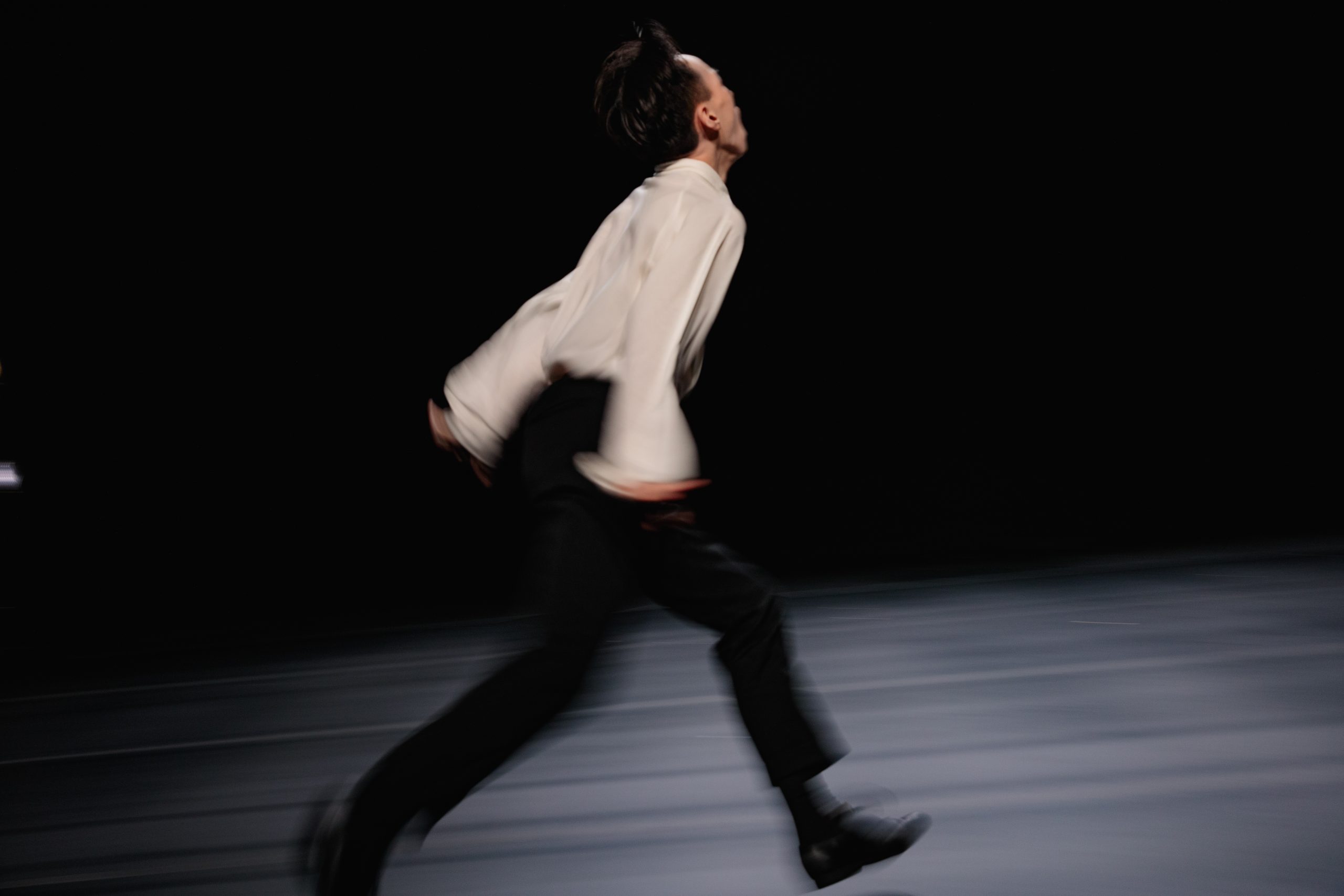
- 詩のかなたの詩/2023年 9月再演 @Macao Cultural Centre Blackbox I/photo by Nick Sou/
Yasushi Kurotaki
黒瀧 保士
- ART FAIR - CROSSOVER


Born in Tokyo in 1986. Actor, dancer, choreographer.
In 2010, he studied mime under Hiroyasu Sasaki, director of the Japan Mime Research Institute.
At the same time, I am learning classical ballet. In 2011, he took a special opportunity to participate in a workshop hosted by Saburo Teshigawara and lecturer Rihoko Sato, soloist of KARAS, held at the Yamaguchi Center for Arts and Media, and continued to participate in workshops until 2019. Learn the dance method of Saburo Teshigawara.
In December of the same year, words from Saburo Teshigawara prompted him to resume his own creative activities.
In theater, from 2010 to 2016, he appeared as an ensemble in NODA/MAP's productions.
In June 2023, his solo dance piece “Uta no Kanata no Uta” presented at SAI DANCE FESTIVAL 2023 COMPETITION won the Best Work Award.
It has been decided that they will be invited to dance festivals to be held in Macau, South Korea, Finland, and Kyoto.
Emphasizing gravity, space, objects, light, and mental images, he creates movement by letting his imagination leap from the memory of his body.
He pursues physical expression based on mime, with themes of human fragility and what it means to be human.
Born in Tokyo, 1986. Actor, dancer, and choreographer.
In 2010, he studied mime under Hiroyasu Sasaki, director of the Japan Mime Institute.
In parallel, he studied classical ballet.
In 2011, he participated in a workshop led by Saburo Teshigawara at the Yamaguchi Center for Arts and Media.
Special participation in a workshop by KARAS soloist and instructor Rihoko Sato was an opportunity for him.
He will continue to participate in workshops until 2019, learning Saburo Teshigawara's dance method.
In December 2019, he resumed his own creative activities after words from Saburo Teshigawara.
In theater, he appeared as an ensemble member in NODA•MAP productions from 2010-2016.
In June 2023, his solo dance piece "Double poem" presented at the SAI DANCE FESTIVAL 2023 COMPETITION won the Grand Prize.
Invited to dance festivals in Macau, Korea, Finland, and Kyoto.
He places emphasis on gravity, space, objects, light, and mental images,
The physical and skin sensations of self and others, and the shifting of the center of gravity to support the body,
He creates movement by leaping from his imagination based on the memories of his body.
He pursues physical expression based on mime on the theme of human fragility and what it means to be human.
Yasuji Kurotaki_CV
photo by Rinko Tsukamoto
In 2010, he studied mime under Hiroyasu Sasaki, director of the Japan Mime Research Institute.
At the same time, I am learning classical ballet. In 2011, he took a special opportunity to participate in a workshop hosted by Saburo Teshigawara and lecturer Rihoko Sato, soloist of KARAS, held at the Yamaguchi Center for Arts and Media, and continued to participate in workshops until 2019. Learn the dance method of Saburo Teshigawara.
In December of the same year, words from Saburo Teshigawara prompted him to resume his own creative activities.
In theater, from 2010 to 2016, he appeared as an ensemble in NODA/MAP's productions.
In June 2023, his solo dance piece “Uta no Kanata no Uta” presented at SAI DANCE FESTIVAL 2023 COMPETITION won the Best Work Award.
It has been decided that they will be invited to dance festivals to be held in Macau, South Korea, Finland, and Kyoto.
Emphasizing gravity, space, objects, light, and mental images, he creates movement by letting his imagination leap from the memory of his body.
He pursues physical expression based on mime, with themes of human fragility and what it means to be human.
Born in Tokyo, 1986. Actor, dancer, and choreographer.
In 2010, he studied mime under Hiroyasu Sasaki, director of the Japan Mime Institute.
In parallel, he studied classical ballet.
In 2011, he participated in a workshop led by Saburo Teshigawara at the Yamaguchi Center for Arts and Media.
Special participation in a workshop by KARAS soloist and instructor Rihoko Sato was an opportunity for him.
He will continue to participate in workshops until 2019, learning Saburo Teshigawara's dance method.
In December 2019, he resumed his own creative activities after words from Saburo Teshigawara.
In theater, he appeared as an ensemble member in NODA•MAP productions from 2010-2016.
In June 2023, his solo dance piece "Double poem" presented at the SAI DANCE FESTIVAL 2023 COMPETITION won the Grand Prize.
Invited to dance festivals in Macau, Korea, Finland, and Kyoto.
He places emphasis on gravity, space, objects, light, and mental images,
The physical and skin sensations of self and others, and the shifting of the center of gravity to support the body,
He creates movement by leaping from his imagination based on the memories of his body.
He pursues physical expression based on mime on the theme of human fragility and what it means to be human.
Yasuji Kurotaki_CV
photo by Rinko Tsukamoto
